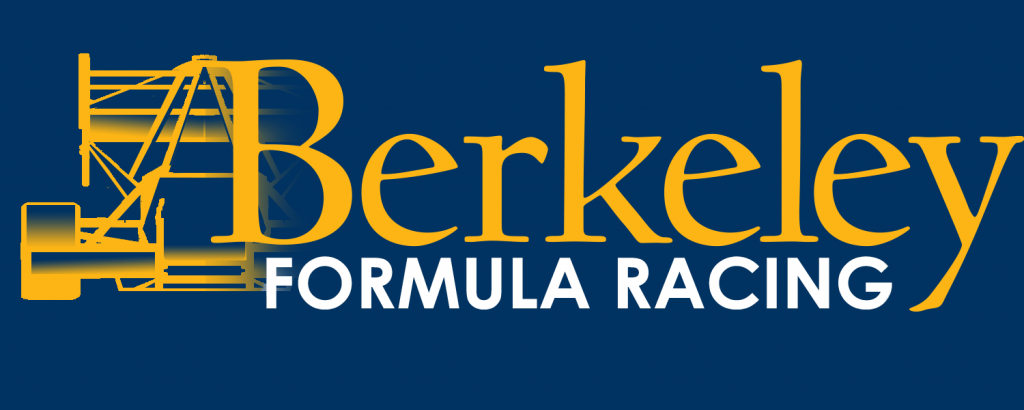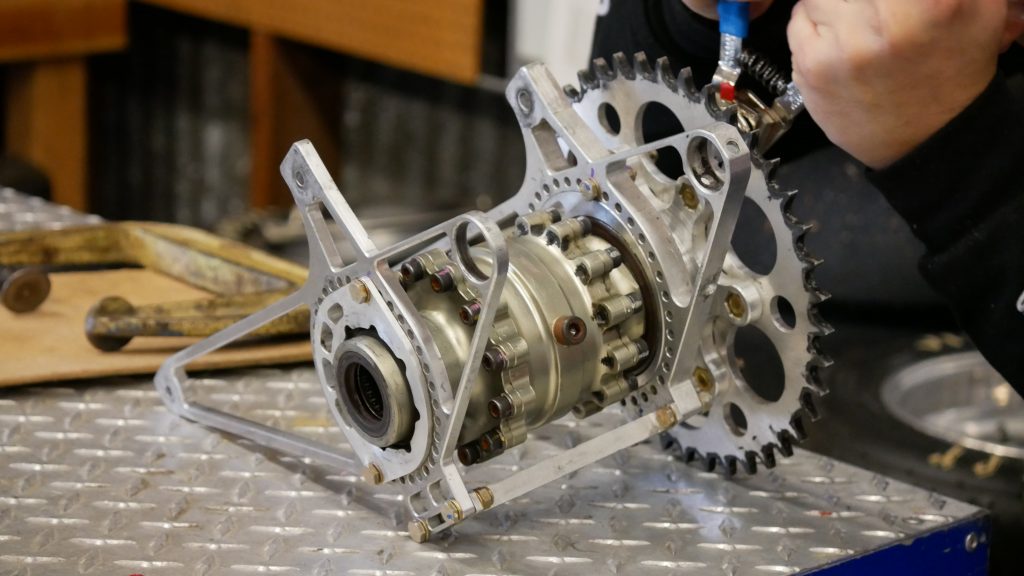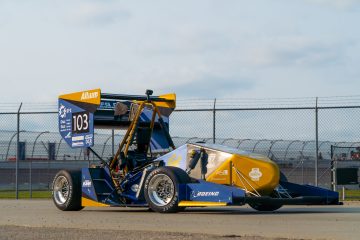
As a result of the COVID-19 outbreak, SAE has made the decision to switch our physical dynamic competition scheduled for this summer to a virtual one. We are still committed to the development and completion of B20, as we always look to learn from our design and manufacturing experiences. We have delayed the release of our already written Spring Newsletter as this situation unfolded to ensure we could include the most recent updates. Thank you for being supportive and understanding.
Welcome to Berkeley Formula Racing’s Spring 2020 newsletter. Before we begin our testing season, here’s an update on how our winter went.

Aerodynamics

Aero is extremely happy to benefit from Sigmatex Materials Innovations’ recent donation of 1200 yards of carbon fiber and a huge surplus of foam from Coastal Enterprises. Aero has been focused on maximizing time efficiency and increasing our quality of mold preparation and consistency of manufacturing. One of the ways we have increased efficiency is by strategically remachining old molds from different years. We have also enlisted the help of sanding blocks and power sanding tools to drastically speed up our mold processes. Our bodywork was completed well in advance of Car on the Ground and we are on track to complete the aerodynamics package a month before Cal Day. Overall, we have optimized and refined already existing practices within the subsystem and are excited to see our lighter and more efficient package on the car.
Brakes + Driver Interface


BDI’s main focuses recently have been manufacturing the seat, brake rotors, and pedal tray components. We spent one week creating a four-piece mold for the seat at Jacobs. One Saturday, we impregnated carbon fiber for the seat, laid up the first 5 layers of the mold and vacuum bagged it over 14 hours. Laying up carbon fiber for the seat was especially challenging given the heavily curved nature of the mold. Our design for a more easily adjustable pedal try looks and works great in our new carbon fiber-aluminum honeycomb floor. The drivers have praised the new angle of the steering wheel which is now more vertical, facing towards the driver. The new more supportive seat will be made more supportive when we use expanding foam to create custom inserts for the Autocross time trial and Endurance drivers.
Business

Business has made great progress on a variety of fronts, all strengthening our present and future as a team. Firstly, we are incredibly thankful to everyone that helped us exceed our fundraising goal of $10k in November! That was a huge boost for us, and it has allowed us to pursue further special projects, like investing in load cells. Business also secured a few significant donations, the most notable being 1200 yards of carbon fiber from Sigmatex Materials Innovations, enough for several years. We have also secured a further pair of 450cc engines from KTM which will be crucial in helping the team’s understanding of our new power-plant. Donations from Red Bull, Monster, and Rockstar have helped the team power through late nights. A variety of foams were also donated to us from Coastal Enterprises, allowing aero to create more molds. Regarding our future, we are pleased to continue our relationships with Ford and General Motors. We also plan to ramp up our digital media production in the form of more high quality photography, videography, and graphics, as well as find a different testing site.
Chassis

Chassis has been pushing hard to complete everything on time for the other subsystems. After assembly of the main chassis tubes over winter break, we kicked off the spring semester by mounting all tabs for other components. We also finished manufacturing our newly implemented carbon fiber floor. Making the floor fit cleanly was a learning experience, given that this was the first time we had made a carbon fiber floor. Following a few very late nights completing all of the welds, we sent the chassis off to Leon’s Powder Coating in Oakland for a coat of California Gold, or “banana” as some members call it. Finally, we finished off the B20 Chassis with our torsional stiffness test, where we used a combination of scales, shims, and dial indicators to compare our real life torsional stiffness to that of our simulations. For the rest of the semester, Chassis members can be found working on their developmental projects. Mark, Emily, and Armen will be working on implementing strain gauge testing for the engine bay. Andrew, Alex and Karan will be researching and testing a custom composite impact attenuator for next year’s car so we can leave our geometrical nose behind.



Drivetrain
Drivetrain has been fortunate to have most of its operations go as planned. We are excited to see how a variety of changes will work in testing, including a new design that includes our sprocket and the sprocket carrier to reduce weight. We are also changing to a softer and smaller 16 inch tire size while reusing last year’s ultra lightweight wheel centers. One obstacle we have had to work around is how to redesign and fit a chain guard to the new engine. We are excited for testing to trial various settings for our differential, and look forward to trying out an even more highly limited slip angle.

Engine


Engine has had its hands full transitioning to our new KTM 450cc engine. In adopting a new engine, we were always bound to encounter unexpected obstacles along the way. These include achieving a consistent cold start, having to redesign and rewire a new harness, and our dynamometer’s water brake sprocket shearing clean off. Because we have had to dedicate so much time to adjusting the starting fuel values and timings, the starter motor took quite a beating and needed to be replaced. Leading up to Car on the Ground, we have been largely focused on manufacturing and fitting intake and exhaust pipes, radiator fitting, and fuel lines. We look forward to continuing our learning process about this new motor and being able to unlock the full horsepower and torque advantages that will come with more displacement (and possibly a new turbo).
Electrical

The Electrical subsystem has focused its efforts on producing the ADL, ECU, and power harnesses in time for COTG. A larger team than previous semesters allowed us to launch into a variety of projects aimed at increasing the technological functionality of our vehicle. A new shift light system has been developed that visually communicates the ideal shift point to the driver. We have also automated continuity checks on sensors using indigenously-developed hardware and software. We call this system the ECU/ADL checker. We have created our own computer algorithms to optimize wire routing and length calculations. For the future, we are in the process of developing a telemetry system that relays live data from the vehicle to a ground station over a cellular connection. A long-term goal of phasing out the antiquated MoTeC ADL has been adopted by the team and is currently in progress.
Electrical Solid Parts

ESP is a new subsystem focused on handling the integration of sensors and other electronics into the car. This involves designing and fabricating mounts, increasing the reliability and our understanding of sensors throughout the car. This is a challenging task because many of our sensors, including the tire temperature sensors and our load cells, are pieces of equipment we have no prior experience interacting with. We are presently on a steep learning curve, learning more about what sensors we have and researching into what projects we could potentially pursue in the future, like active aerodynamics or electronically adjustable brake bias.
Suspension

Since the start of the spring semester, the suspension subsystem has been busy manufacturing all of our components for the car. Over the past couple of weeks, we have completed the assembly of the A-Arms, Pushrods, Tie Rods, Rockers, Uprights, and Steering of the car. One of the best parts of our assembly this season has been the simplicity of our new direct actuated front suspension. It is comprised of far less parts than last year’s pull rod system and produces less aerodynamic disturbance. Each of Suspension’s sub-assemblies had challenges of their own for manufacturing, with some even requiring small adjustments to ensure proper functionality. Ultimately, the team worked together and pushed through the difficulties to complete all of the suspension and steering right on schedule for early COTG. As of now, we plan to stick with this suspension geometry for at least a couple of seasons, so we look forward to deeply understanding our suspension and fine tuning it.
Vehicle Dynamics
Vehicle Dynamics is eagerly anticipating our testing season, as we look forward to benefiting from the use of load cells rather than our strain gauges. The load cells will represent a huge step in quantity and quality of our data that we can use to enrich our understanding of the car in motion. Information from suspension loads and measuring the aerodynamic load as the car moves at different speeds, over bumps, and through corners will be analyzed at a deeper level than ever before. Additionally, we will be upgrading our ECU to process more sensor inputs from the additional data coming off of our load cells. Lastly, we are very excited about our tire temperature sensing we will use this testing season. We have designed and created a mount that will be able to house three sensors per tire to measure the middle, outside, and inside edges of the tire surface to better understand how the car and tires interact with a racing surface.

Thank you for reading our Spring 2020 newsletter and for your continued support of our team. Let’s get testing!
Want to receive the latest updates? Sign up for our mailing list!

